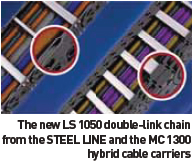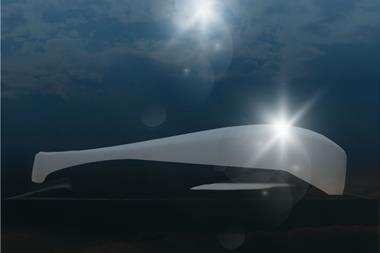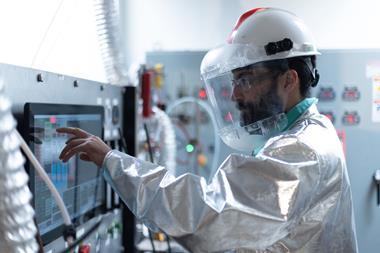
After an absence of four years, the EMO exhibition returns to Hanover, Germany, this coming September. The 2007 event attracted more than 166,000 visitors from over 60 countries and 2,120 exhibitors; even the Milan event, at the depth of the recent European recession, attracted 1,204 exhibitors and approximately 124,000 visitors. Despite the lower turnout, the figures highlight the importance of the EMO events to the metalworking and toolmaking industry.
The organisers say that 1,500 exhibitors from 36 different countries had already registered for EMO Hannover 2011 by the beginning of this year. As of the end of May, 1,945 exhibitors had registered. Billed as the ‘world’s premier trade fair for the metalworking sector’, EMO features product launches applicable to automotive, aerospace and other industries, offering the opportunity to visit an unparalleled number of suppliers, all available in a total exhibition area of 140,000m2, split into the 27 halls that make up the Hannover Exhibition Centre.
The strapline for this year’s exhibition is ‘More Than Machine Tools’, showcasing new machinery, technical solutions, product support services, production process sustainability. The show will focus on machine tools for cutting and forming, production systems, high-precision tools, automated material flows, computer technology, industrial electronics and accessories. As well as the stands in the exhibition halls, EMO will be hosting a number of seminars and presentations on topics including neural networks, which enable components to ‘self-book’ their slots with particular machines through the IT system and with RFID tags; ‘the factory of the future’, which integrates knowledge and ‘learns’ from it; multipurpose machines; light weighting; energy efficiency; and sustainability.
The Fraunhofer Institute for Machine Tools and Forming Technology (IWU), based in Chemnitz, Germany, has announced that it will be working with the event organisers to present a ‘Blue Competence’ conference covering resource-efficient production, machine tools and energy monitoring and management. The objective of Blue Competence is to facilitate a forum in which manufacturers can exchange news and views in a non-competitive environment. One of the institute’s major projects is how to analyse and record energy consumption levels in the design and operational phases of machine tools.
New techniques and machinery for cold-forming of components such as gear teeth and heat recovery in hot processes are also expected to be on display.
Multipurpose machinery and equipment, designed to offer the flexibility to handle short batches and rapid changeover, will also be in evidence. Light weighting is also a top concern of manufacturers and suppliers in the auto industry. This is not just about an increased use of plastics; new, lighter alloys can offer energy savings and weight reduction opportunities. Alloys are being developed that do not need traditional high temperatures and tools are being created whose waste heat during cool down is fed back into the production process. Historically, aerospace production methods, materials and methodology have found their way into the automotive sector, so it may be worth considering the agenda (when published) for the ‘New Production Technologies in the Aerospace Industry’ conference, hosted by the IFW at Leibniz University Hannover, happening concurrently with EMO Hannover 2011, from 22-23 September in Halls 1 and 3a.
The following is a sample of the equipment some companies will have on display at EMO Hannover 2011.
At the centre of Bosch Rexroth’s stand will be its IndraDrive Mi servo drive, with multi-Ethernet interface. The company says that the drive facilitates straightforward realisation of modular machine concepts and simplifies realisation of varied automation structures, using a single type of hardware. The STO (safe torque off) safety function, which is integrated into the drive, is claimed to increase the degree of freedom for modulation.
 The multi-Ethernet interface of the IndraDrive Mi allows direct connection of the drives to Ethernet components, reducing the amount of required hard wiring. Configuration of SERCOS III, Profinet IO (RT), Ethernet/IP and EtherCAT communication protocols can be also be achieved using internal software settings.
The multi-Ethernet interface of the IndraDrive Mi allows direct connection of the drives to Ethernet components, reducing the amount of required hard wiring. Configuration of SERCOS III, Profinet IO (RT), Ethernet/IP and EtherCAT communication protocols can be also be achieved using internal software settings.
Wiring needs are further reduced by the decentralized servo drives; Rexroth claims up to an 85% reduction in comparison to conventional solutions. The company’s pneumatic and hydraulic actuators can be connected to the IndraDrive Mi via SERCOS III and accessed through the control system.
As additional Ethernet actuators and peripheral devices can be connected directly to the drive, they don’t need to be wired all the way into the control cabinet, reducing installation costs. Acting as the integrated ‘Safety On Board’ function, STO also reduces the need for wiring and further eliminates hardware, without requiring an additional control system. When the STO function is activated, the drive will interrupt current to the connected motor within milliseconds, thus preventing a stopped engine from being accidentally restarted.
 At EMO 2011, MAG will be presenting a range of upgrades and new developments for the first time in Europe. Top of the list is cryogenic machining, described by MAG as a ‘game-changing technology’. This solution is presented for core manufacturing technologies (metal cutting, exotic materials, titanium, inconel, CGI, composites). ‘Cryogenic’ means ‘very low temperatures’; MAG’s interpretation includes a new cooling system through the spindle and tool that, the company says, allows for dramatic increases in feed rates and tool life.
At EMO 2011, MAG will be presenting a range of upgrades and new developments for the first time in Europe. Top of the list is cryogenic machining, described by MAG as a ‘game-changing technology’. This solution is presented for core manufacturing technologies (metal cutting, exotic materials, titanium, inconel, CGI, composites). ‘Cryogenic’ means ‘very low temperatures’; MAG’s interpretation includes a new cooling system through the spindle and tool that, the company says, allows for dramatic increases in feed rates and tool life.
MAG acquired former Samputensili operations in Chemnitz, Germany, in September 2010, and its portfolio now includes hobbing and gear grinding solutions. It will be premiering its new VDM 250 shaft manufacturing machine, which will be presented in a gear shaft manufacturing cell linked with a hobbing machine. MAG already has a history of integrating honing operations for powertrain manufacturing lines or single machine applications. When the company launched its DVH vertical turning centre in 2007, it was the first machine tool builder to bring hydraulicfree equipment to market. Its latest development it the Specht high-volume machine system, the ‘E’ version of which has no hydraulics.
Kabelschlepp’s stand will illustrate aspects of its collaborative partnership with Tsubaki Group. The company’s Uniflex Advanced plastic chain series machine ranges have been expanded, with additional interior width choices, and models with new bending radii of 38 and 48mm. An aluminium duct system is now available for the 1555 series for vertical and hanging applications. The company says that the modular machine, which is also available as a complete system, is suitable for use in fast-moving storage and retrieval machines with high lateral acceleration. A rotating cable carrier system with an angle of rotation of 580° has been developed for use in areas with limited space.
 Also on display will be Kabelschlepp’s MONO 0200 plastic cable carrier, which has been redesigned and optimised via the elimination of interfering edges. The clean room compatible, low-vibration TKR cable carrier now has a slideable chain material for reduced guided cable wear. The chain satisfies the requirements Clean Room Class 1 in accordance with ISO 14644-1. The company has also redesigned cable guide holders for increased protection in high-speed operations, which does not limit the robot’s movements. New LS 1050 double-link chains for the Steel Line and MC 1300 hybrid chain carrier have been redesigned for longer service life.
Also on display will be Kabelschlepp’s MONO 0200 plastic cable carrier, which has been redesigned and optimised via the elimination of interfering edges. The clean room compatible, low-vibration TKR cable carrier now has a slideable chain material for reduced guided cable wear. The chain satisfies the requirements Clean Room Class 1 in accordance with ISO 14644-1. The company has also redesigned cable guide holders for increased protection in high-speed operations, which does not limit the robot’s movements. New LS 1050 double-link chains for the Steel Line and MC 1300 hybrid chain carrier have been redesigned for longer service life.
Additionally, the double-link design can achieve up to 40% longer self-supporting lengths, with a 30% increase for the hybrid, compared with standard versions. Additional loads of up to 130 kg/m are possible.


































